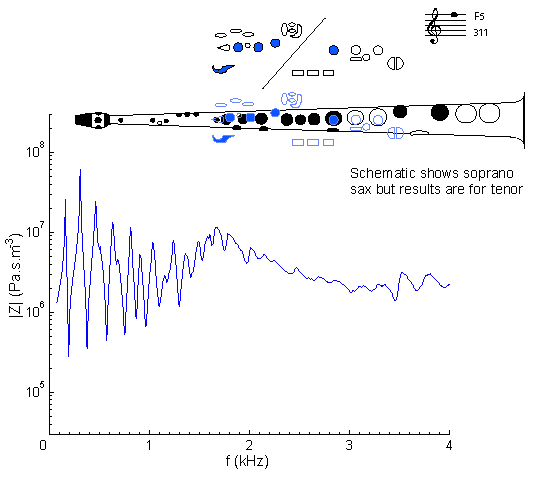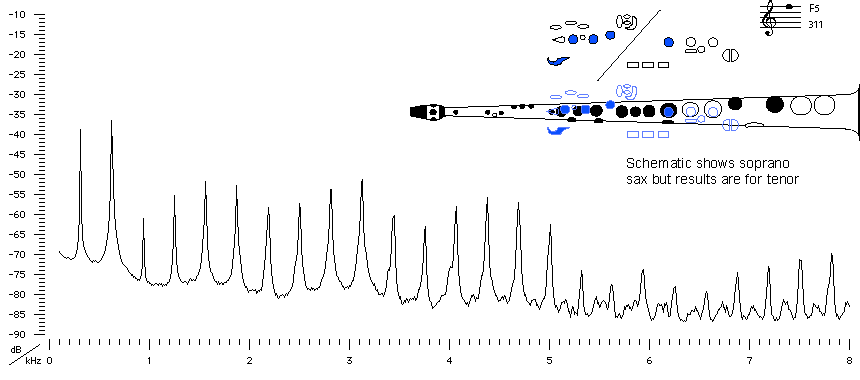| Acoustics of the saxophone |
Bb tenor saxophone |
F5 |

|
Fingering Acoustic schematic Non-specialist introduction
to acoustic impedance Notes are the written pitch. |
This is the fourth note in the second register. It differs from F4 (the corresponding note in the first register) in that it uses a register hole. This causes a leak in the bore that weakens the first impedance peak, but has little affect on higher peaks – see register hole for an explanation, and compare with F4, whose impedance spectrum is almost identical except for the first peak. Above about 1 kHz, the curve is irregular: see the discussion in cut-off frequency.
Compare with the impedance spectrum for a soprano sax on written F5: same fingering but sounding one octave higher.

Sound spectrum
of a Bb tenor saxophone
played using fingering for F5.
For more explanation, see
Introduction to saxophone acoustics.
|
Contact:
Joe Wolfe
/ J.Wolfe@unsw.edu.au |